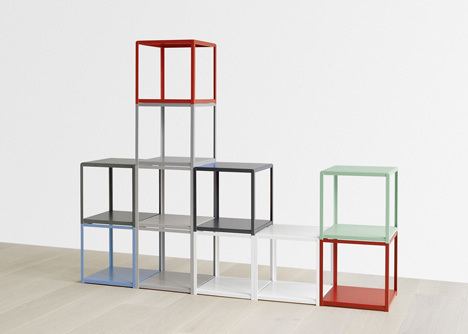Name Ferdinand Kramer | Role Architect | |
 November 4, 1985, Frankfurt, Germany | ||
Ferdinand kramer the rediscovery of an avant gardist
Ferdinand Kramer (January 22, 1898, Frankfurt, Germany– November 4, 1985, Frankfurt) was an important German architect and functionalist designer.
Contents
- Ferdinand kramer the rediscovery of an avant gardist
- Ferdinand Kramer Ausstellung zeigt Design
- Biography
- His heritage
- References
Ferdinand Kramer-Ausstellung zeigt Design
Biography
Kramer's father was owner of the most well-known of Frankfurt hat shops. In 1916, immediately after conclusion of school, Kramer was drawn into military service and remained a soldier through the end of the First World War. The following year he trained at the Bauhaus for a few months before quitting, disillusioned with the technical level of the training, then began a three-year architectural study in Munich with Theodor Fischer. Kramer returned to Frankfurt in 1922. With the lack of architectural commissions during this period of inflation, he concentrated on furniture designs for Thonet and metal utensils, for example his "Kramer Oven", a sheet-metal furnace.
From 1925 through 1930, Kramer worked for architect and civic planner Ernst May building and furnishing the housing projects of New Frankfurt, and was a contributor to the second CIAM conference. After disputes with the Nazi regime and professional disqualification, Kramer emigrated to the United States in 1938 and worked on a variety of projects, including work with Norman bel Geddes on designs for the New York World's Fair of 1939, designs for inexpensive "knock-down" furniture which anticipate today's commercial "flat-pack" furniture, and commissions from his friend Theodor Adorno for the Institute for Social Research during its New York years. Kramer became a naturalized US citizen in 1945.
On his return to Germany in 1952, Kramer taught and served as the director of building at the Goethe University Frankfurt until his retirement into private practice in 1964. Paul Friedrich Posenenske followed the architectural language introduced by Ferdinand Kramer at the university buildings. The university moves step by step to the new Poelzig/Westend and Nieder-Eschbach campuses, so many of the old buildings in Bockenheim will be sold or even torn down although they are landmarked buildings.
Ferdinand Kramer was married to Beate Kramer and later to Lore Kramer, who still cares for his legacy. They have three daughters.
His heritage

From December 9, 1982, to January 23, 1983, a retrospective of Kramer's work was shown at Bauhaus archive in Berlin, 1983 at Amerika house, Frankfurt. From June 5 to August 4, 1991, the Museum for Design in Zurich (Switzerland) showed another retrospective "Ferdinand Kramer - Der Charme des Systematischen" which was also shown in Frankfurt at the Deutscher Werkbund (in cooperation with the DAM, Deutsches Architektur Museum) and later at the Bauhaus Dessau. The Frankfurt university keeps samples of furniture designed especially for their purposes (as part of their heritage) in the archives. A few other museums like the Museum fur Angewandte Kunst in Frankfurt am Main, the Design collection in Wuppertal or the Thonet Museum as well as the Vitra Museum have several older pieces of Kramer's furnitures. Some products designed by Kramer are re-issued, like the doorhandle (by ironmonger/in Germany: by Tecnoline who is the only company holding the Kramer family's approval and license to produce and sell the door handles). e15 introduced a few re-edited pieces of furniture on the Salone del Mobile (furniture fair in Milan) in April 2012.
